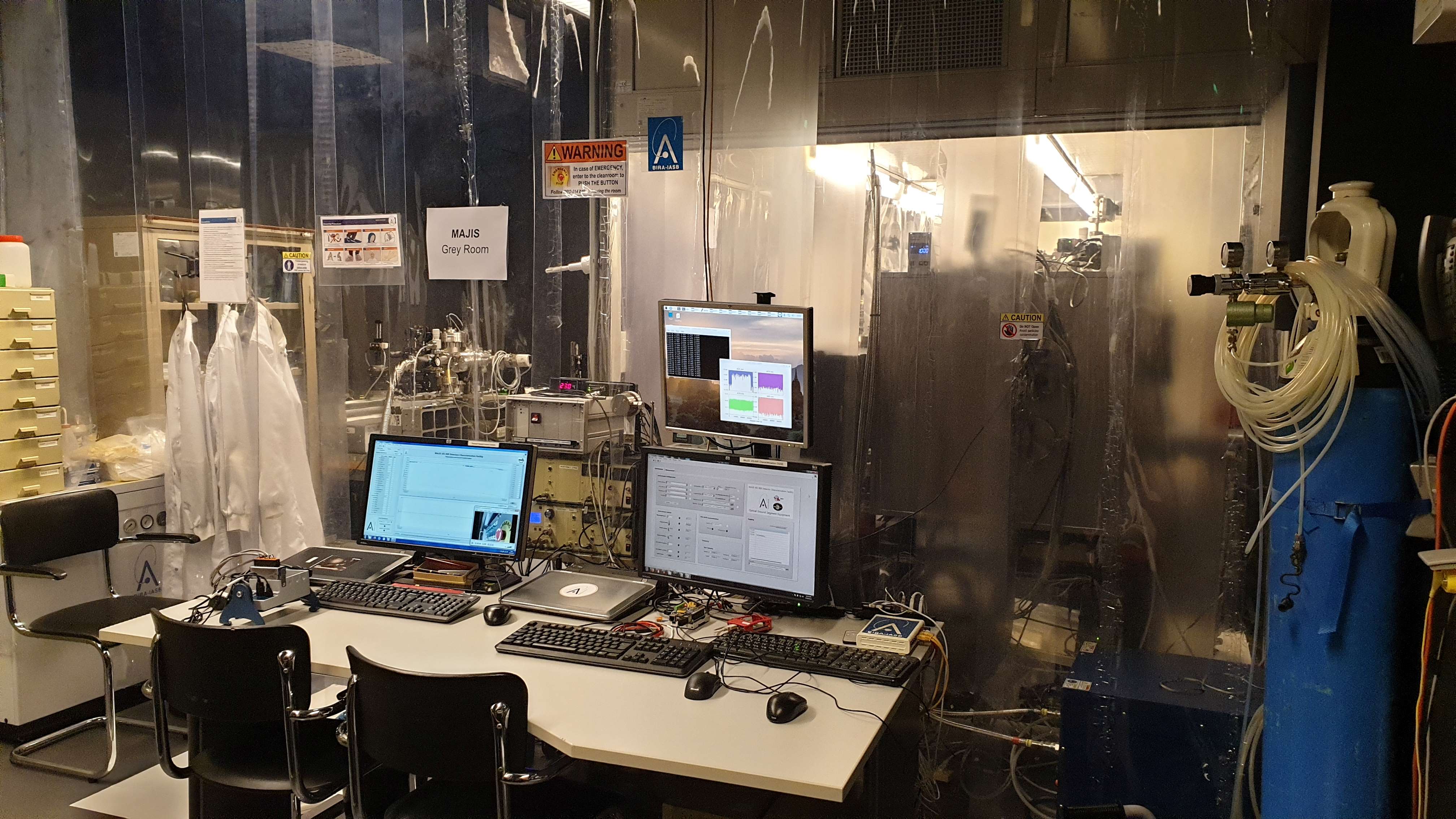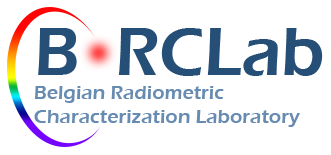The BIRA-IASB is a Belgian federal scientific research institute. Its main tasks are research and public service in physics and chemistry of the atmosphere of Earth and other planets. It includes for example measurements of solar irradiance, spectroscopic measurements for trace species in the atmosphere, or aurora observations.
Research started in the 60’s using ground-based or on board balloon and rockets instrumentation, followed in the 80’s by space projects.

Figure 1. Control room of the VIS-NIR thermal-vacuum facility used for the MAJIS project.
All these measurements are based on radiometry, which aims to measure the electromagnetic field in absolute or relative unit. For this dedicated instrumentation, it is mandatory to perform a complete radiometric characterization.
Indeed, at the instrument level, measurement equations and transfer functions are used to convert raw electronic signals into meaningful and useful scientific data. Therefore, all the parameters appearing in these equations must be characterized (dark and saturation levels, correction factors for non-linearity, temperature dependencies, or angular response within the field of view). Moreover, transfer functions provide the key relationship to derive the uncertainty of any single measurement.
Crucial for space missions
Radiometric characterizations are even more crucial with instruments designed for space missions, as they face harsh vacuum, thermal and radiative environment. It is particularly important knowing post-flight calibration is not easily achievable. Consequently, there is a need to verify if the design is valid for flight conditions. It is worth to mention that BIRA-IASB is also involved in many missions for magnetospheric and ionospheric studies. However, these payloads don’t require radiometric characterization.
One of our major projects has been the involvement in the development, the characterization and the absolute calibration of a spectroradiometer on board the International Space Station (ISS) that delivered solar reference spectra and irradiance variability measurements:
Contributions were also provided to
- SPICAM-Light on Mars Express
- NOMAD on ExoMars
- ALTIUS
These were followed by a key involvement in the MAJIS (Moons And Jupiter Imaging Spectrometer) project, a part of the ESA JUICE space mission, in which BIRA-IASB was responsible for the characterization of the flight and spare model detectors. Therefore, engineers and scientists from BIRA-IASB developed a thermal-vacuum facility for this purpose.

Operational equipment
In the wake of these projects, it was decided to consolidate the experience gained and to enhance the operational equipment in order to be involved in new ground-based or space projects.
 |
 |
 |






